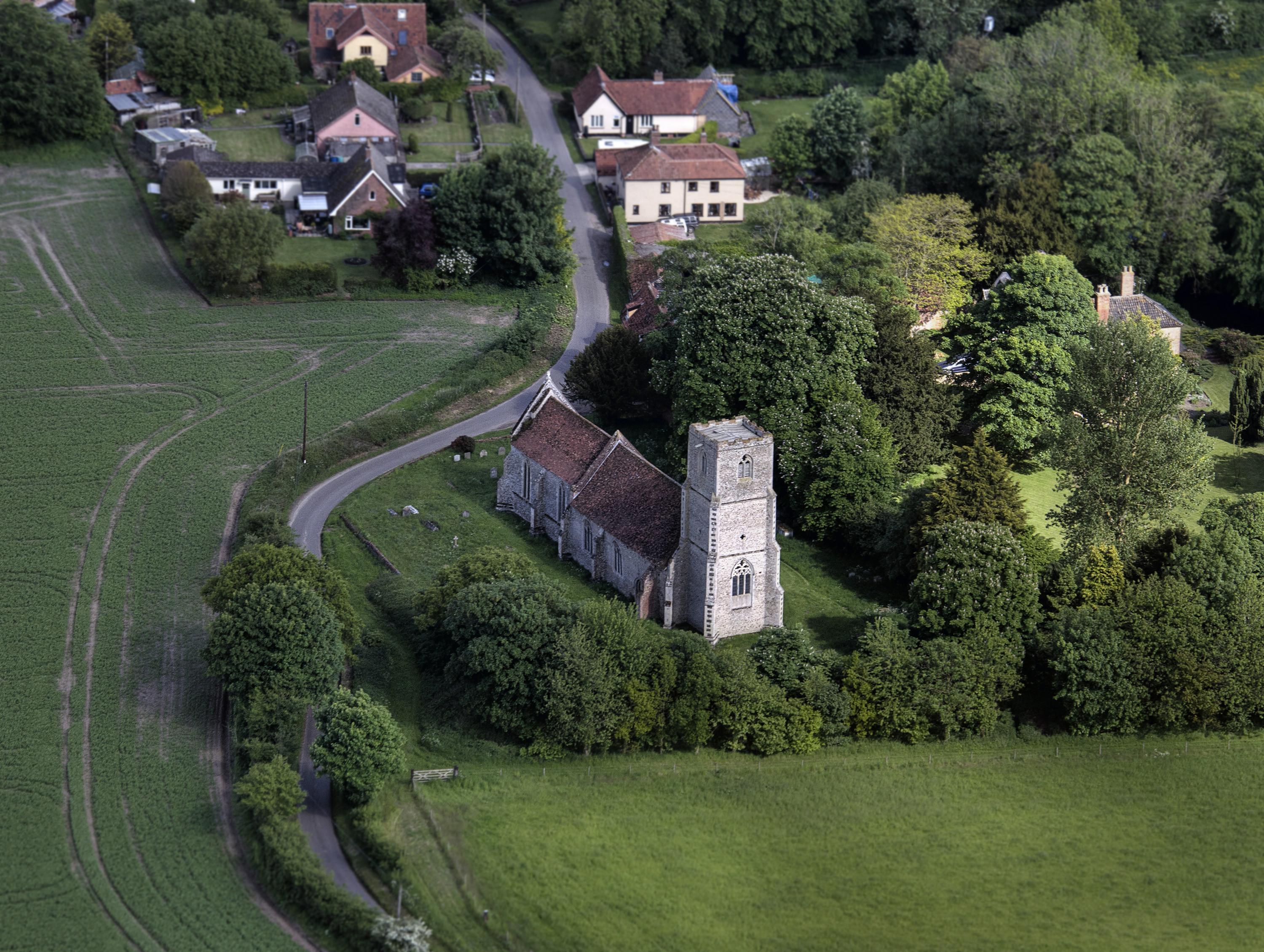All Saints
Old Buckenham, Norfolk
All Saints is an ancient church with a fully thatched roof and full height octagonal tower, some Norman and medieval features, central to the village of Old Buckenham.

In a tiny hamlet, tucked away in rural Norfolk, All Saint’s peaceful, calm atmosphere is unique with its quiet, rustic charm and unspoilt interior.
Photo credit: John Fielding CC-BY 2.0
Wilby, Norfolk
The probable existence of a church in Wilby before the Norman conquest is evidenced by the granting of All Saints church’s advowson to the Abbey of St Mary, York during the reign of William Rufus (1086- 1100).
The current church’s fabric dates to the first half of the 14th century, and tracery reflects the different ownerships: the chancel using sophisticated intersecting tracery; the rest using a playful curvilinear form. Both original due to the conservative repairs by William Weir. The arms on the chancel north wall are of Sir Robert Bell, allegedly a member of the deputation from parliament requiring Queen Elizabeth I to marry.
A disastrous fire in 1633, originating in the Parsonage yard nearby, severely damaged the church. The conflagration was so intense that interior stonework was tinged pink in places. The owner of the local manor house, Robert Wilton, organised repairs which included: benches, box pews, communion rail, and west gallery. By good fortune Wilton’s work was overlooked by the Victorians and Wilby is alone in Norfolk in having a virtually complete set of Jacobean fittings, including the three decker pulpit in its original position amongst the pews.
The Royal Arms over the door somehow survived the civil war probably due to Wilton keeping his influence both with King and Parliamentarians. The chancel and nave roofs were restored in 1902 by William Weir, supervised by Philip Webb, a disciple of Augustus Pugin. Weir’s repairs included strengthening the north east corner of the nave, which had been seriously weakened by the rood stair. The Society for the Protection of Ancient Buildings archive notes: ‘Weir built up the most astonishing brick structure which deserves to be as famous as Ernest Barnsley’s buttress at the Priest’s house, Muchelney’.
This mixture of good fortune and sympathetic restoration results in the unspoilt and quiet church you find today. At peace to serve the local community. And it is through the current parishioners efforts that the church continues to impress with its simple solitude and recent innovations such as a pilot project providing a haven for wildlife.
Old Buckenham, Norfolk
All Saints is an ancient church with a fully thatched roof and full height octagonal tower, some Norman and medieval features, central to the village of Old Buckenham.
Larling, Norfolk
A 12th century rural church situated on farmland in the heart of Norfolk.
East Harling, Norfolk
The first thing the visitor will notice about East Harling's church is the very distinctive pinnacled wooden and lead cased spirelet, or fleche, crowning the tower.